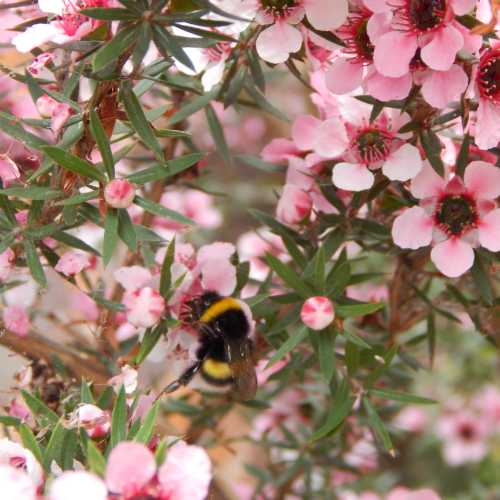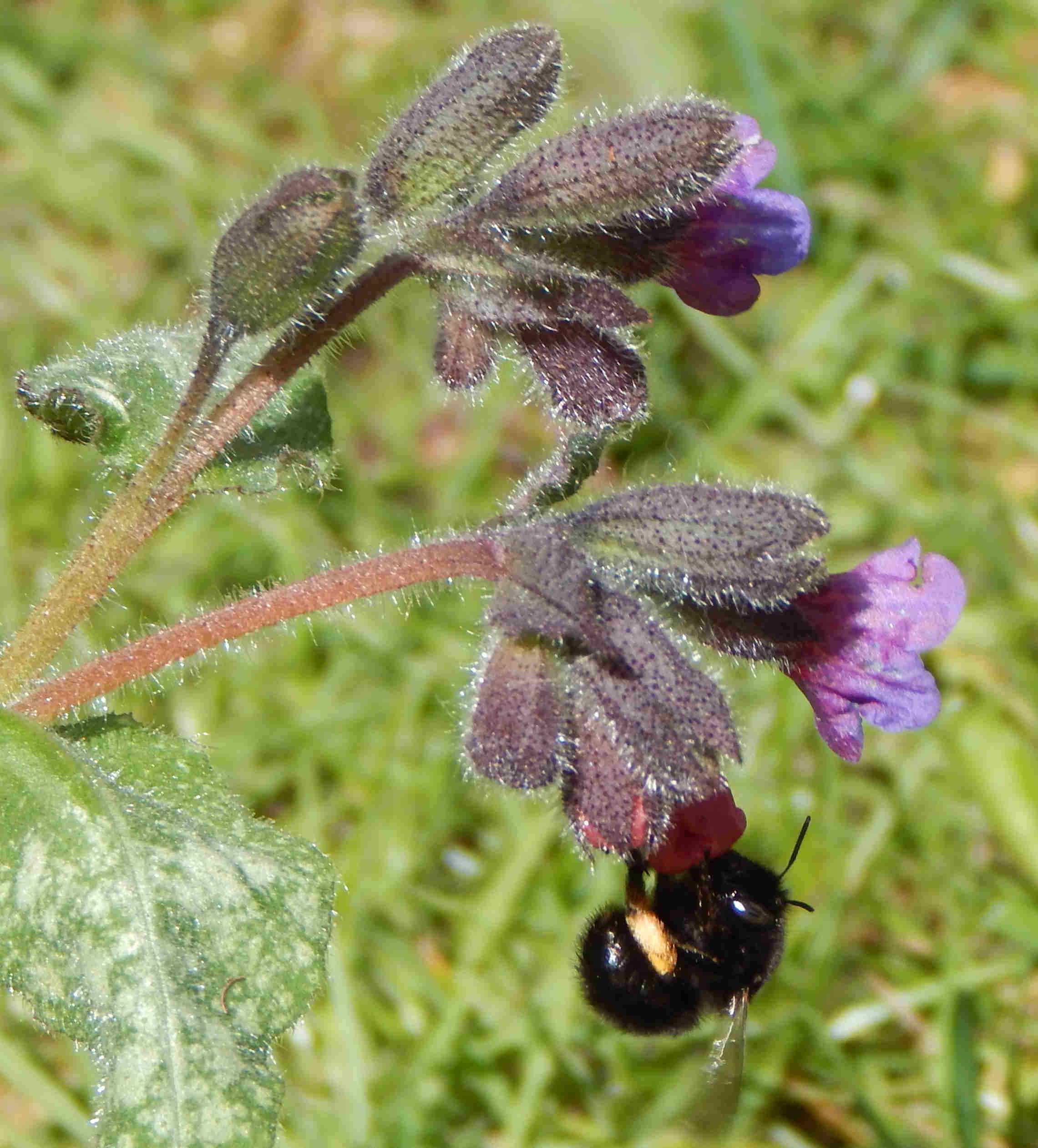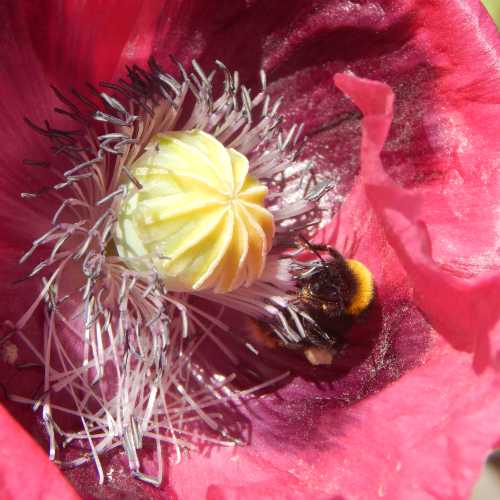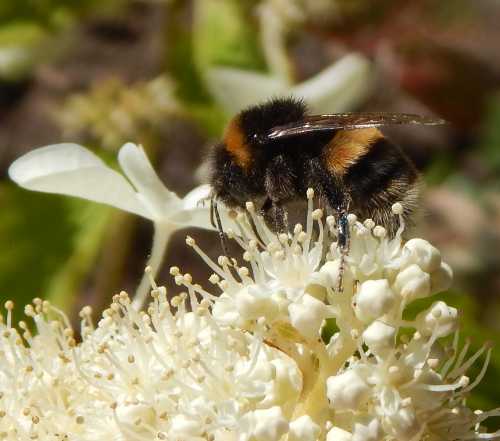Where Have All The Bees Gone?
Reasons why bees may have suddenly stopped visiting your garden.
Hello
I have a garden full of bee friendly plants. Only a couple of weeks ago, I was seeing lots of bees (bumble bees) in the garden, and now they have gone. Why has this happened? I do not use chemicals, and as far as I am aware, nor do my neighbours.
The weather is great, so where have all the bees gone? I still have lots of flowers for them but the bees are nowhere to be seen. Have they died? – Kelly, UK.
I am thrilled that so many people are making their gardens as bee-friendly as possible, and are taking an interest in the bee visitors to their gardens.
Quite a few people, however, are alarmed when it seems that after a spell of regular visits by bees (especially bumble bees), suddenly the visits appear to stop, or decrease substantially. It seems the bees have gone, and people are worried that something is wrong.
I find it's a fairly common query for people with smallish gardens like mine. I myself witness fluctuations in bee visits through the seasons, and the explanation is usually a natural one.
Where have the bees gone? Reasons the bumble bees have stopped visiting your garden
 Above - White tailed bumble bee (Bombus lucorum) foraging on my manuka bush.
Above - White tailed bumble bee (Bombus lucorum) foraging on my manuka bush.For most people, these fluctuations in visits are conspicuous in relation to bumble bees, because bumble bees (whichever the species) are so recognisable.
People are far less likely to be familiar with solitary species, which might also appear to be around for a few weeks, and then apparently ‘disappear’.
Anyway, in short, the reasons this occurs can often be explained as follows:
- Bumble bee species have varied life cycles, and emerge and decline at different times of the year
Gardeners usually notice that at some point, one or two species of bumble bee are quite common in their garden, and are often seen foraging on a favoured flowering bush or patch of flowers.
However, by the time gardeners notice lots of these bumble bees, the colony (or colonies) of that species will be close to, or at its peak already, having produced lots of workers and possibly males.
This means that pretty soon, the colony will naturally come to an end, so that this particular species of bumble bee will no longer be seen in the person's garden.
Only new queens (gynes) will survive, and the new adult queens will find a place to overwinter, and then establish colonies again the following year.
You can read more about this on my page about the life cycle of bumble bees.
In my small garden, I tend to see Bombus pratorum (Early bumble bee) and the Bombus terrestris (Buff-tailed bumble bee) first, and then they stop visiting, during which time, I see fewer bees.
Some time later, different species such as Bombus pascuorum (Common carder bumble bee) and Bombus hypnorum (Tree bumble bee) appear.
- Attractiveness of the plant or shrub depends on the amount of nectar and pollen it offers the bees
Plants and shrubs vary in the amount of nectar and pollen they offer as they grow. Quite simply, the bees may no longer be attracted to a plant, because it no longer produces copious amounts of nectar. The smaller amounts may still be attractive to hoverflies, but less enticing for bees.
I find this happens manuka shrub. I may not have plants in my garden that are at their most attractive to bees, just at that time the manuka is producing less nectar, meaning the bees may look elsewhere for food.
Fluctuations in nectar production in plants and attractiveness to bees has been studied, for example, in brambles.
- The bees are foraging somewhere else nearby
Having a small garden, I am limited in the amount of flower I can provide, and so linked to the point above, bees may forage elsewhere.
I find this often occurs with smallish gardens.
Sometimes at certain times of the year, even if I have very few bumble bees in my own garden, I can walk literally around the corner from my house, and find lots and lots of them foraging on comfrey, which has a very high nectar output (it’s so high in nectar, the tubular flowers are a major target for nectar robbing).
Similarly, wild brambles are a magnet for bees. There are a lot around me, along with knapweed and hemp agrimony (wildflower favourites). Since I’m not interested in growing wild brambles, knapweed or hemp agrimony in my small garden, I accept that for a while, the bees have found a better "restaurant"!
- A symptom of general bee decline
Unfortunately, bee populations have been declining. Please continue to do all you can to help reverse or at least stifle this trend, by continuing to include plants for bees in your garden, and do not give up on the bees.
Read about the reasons for bee decline.
Advice?
In short, my advice would be not to worry too much. Go for a walk around your immediate local
area at different times of the day, and look about you.
Perhaps some-one else is like you – planting for bees, and just as your shrub or flower patch has reduced its nectar output, perhaps your neighbour has a tree in blossom the bees cannot resist.
Or maybe there are brambles nearby in a hedgerow, or some other fabulous plants.
I find I see more bees when I focus on larger
patches of particular bee-favourites, and also on plants to attract certain
species.
For example, I see hairy footed flower bees for a few weeks early in the year, foraging on pulmonaria.
 Above - Hairy footed flower bee female on Pulmonaria
Above - Hairy footed flower bee female on Pulmonaria
I see wool carders on lamb’s ear, a flower I have deliberately included with this bee species in mind.
Bumble bees absolutely love toadflax – Linaria purpurea, so I have plenty of it, and I also get lots of bees on my raspberries and purple loosestrife. I have also included a hypericum shrub in my garden.
"I made my garden bee friendly a year ago. Why aren't the bees visiting?"
If the above describes your scenario:
- Sometimes it takes a while, and it may be that you have to wait longer for bees to become established in your area. It took several years before I finally managed to attract wool carders and hairy footed flower bees into my garden.
- There may be other shrubs and wildflowers nearby that the bees prefer to visit.
- It could be part of the worrying decline of bees in your area.
I would recommend that you persevere with your bee-friendly planting scheme, and if more people in your area do the same, this will help to establish populations of bees locally.
Note:
After reading this page, you might also be interested to read another article: Why are bees not visiting my garden? - especially is if you are concerned about lack of visits from honey bees.
Create a
lawn for bees
If you found this page helpful or interesting, I'd really be grateful if you would share it with others - if not this page, perhaps another, such as Gardening For Bees.
Thank you so much :) .

